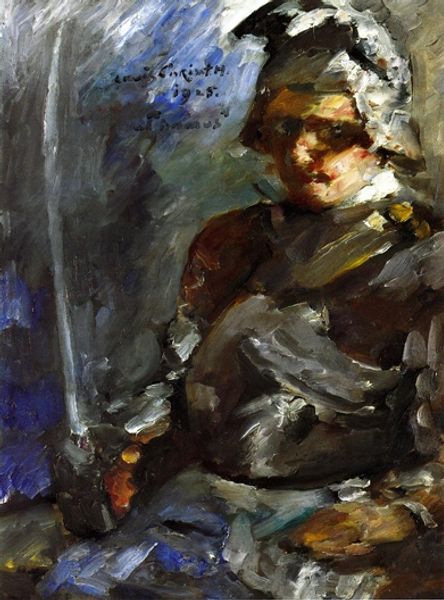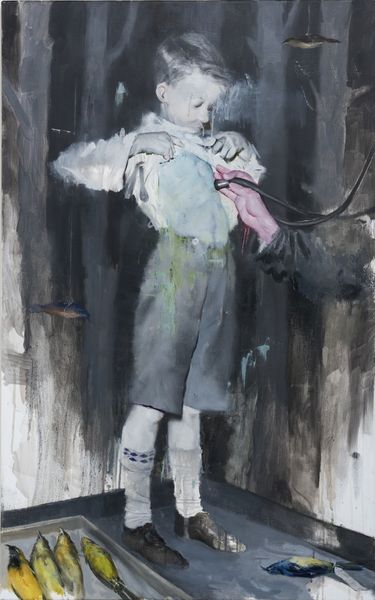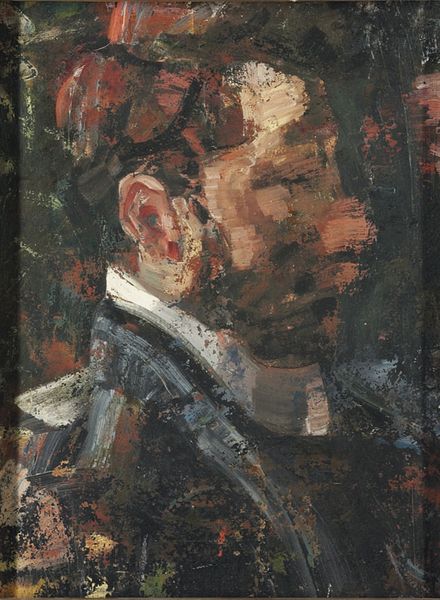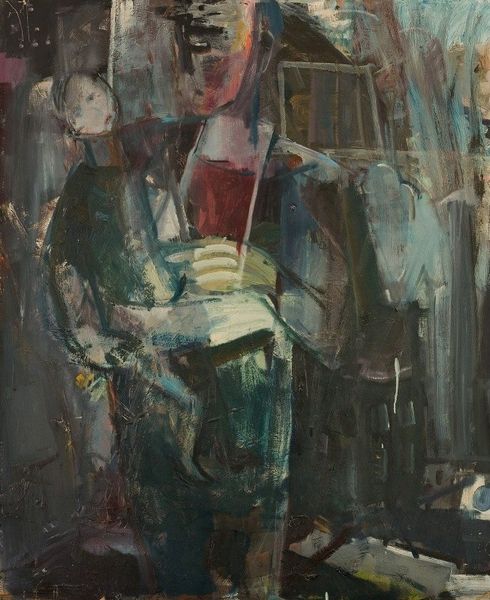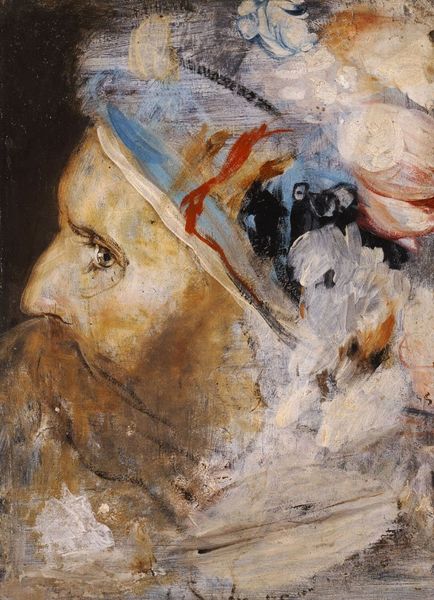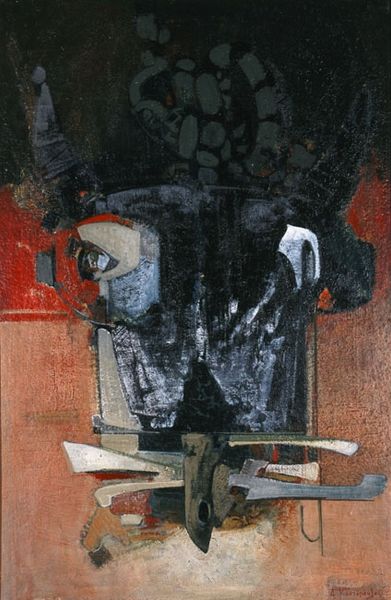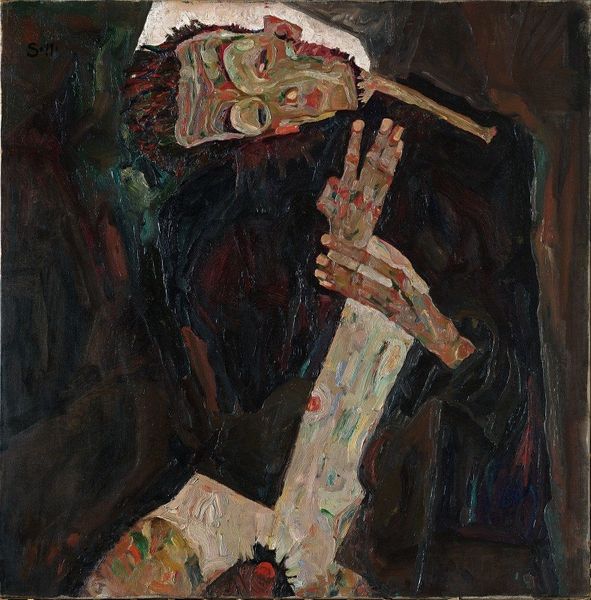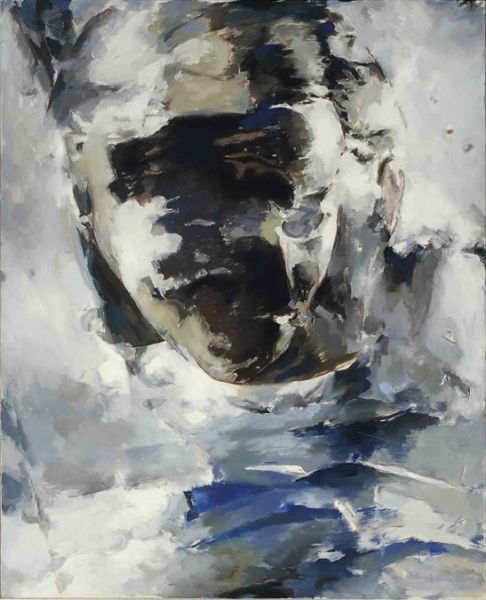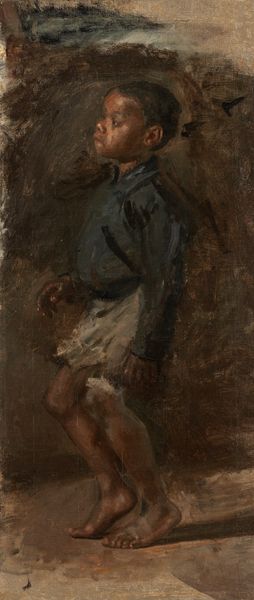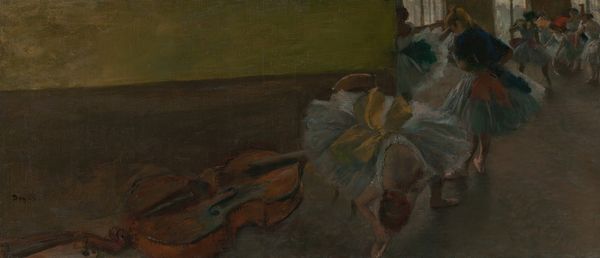
Dimensions: support: 1014 x 621 mm
Copyright: © The estate of Fred Williams | CC-BY-NC-ND 4.0 DEED, Photo: Tate
Editor: Fred Williams's "Coal Delivery," seems to depict two figures engaged in hard labor. The palette is muted, the brushstrokes are loose, and there's a strong sense of the figures being burdened. What social commentary do you see in this piece? Curator: This work, like much of Williams's oeuvre, invites us to consider the socio-economic realities of labor. The figures' anonymity, their faces obscured, speaks to the dehumanizing aspect of industrial work. How does this relate to broader depictions of labor, gender, and class in art history? Editor: I never considered how their anonymity emphasizes the loss of individuality. It makes me wonder about the artist's intent. Curator: Exactly! Williams asks us to reflect on the individuals behind the labor, their stories, and the systems that often render them invisible. It’s a powerful statement about the human cost of industry. Editor: Thank you for shedding light on this. I now have a better understanding of this piece. Curator: It's a reminder that art can be a mirror reflecting societal structures and sparking important conversations about inequality and representation.
Comments
Join the conversation
Join millions of artists and users on Artera today and experience the ultimate creative platform.
tate 6 months ago
⋮
This is a relatively rare example of Williams’s early work, made towards the end of his studies in London. It reflects the tradition of urban realism in British art, which drew upon the example of Walter Sickert, as well as current social concerns. One of a series based on city activities, Coal Delivery replaces the monumentality of contemporary social realism with dynamism. Williams was in Britain for only a short time before returning to Australia where he became one of the leading artists of his time. Gallery label, September 2016
